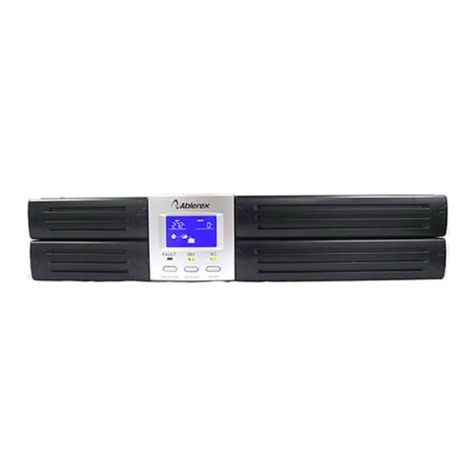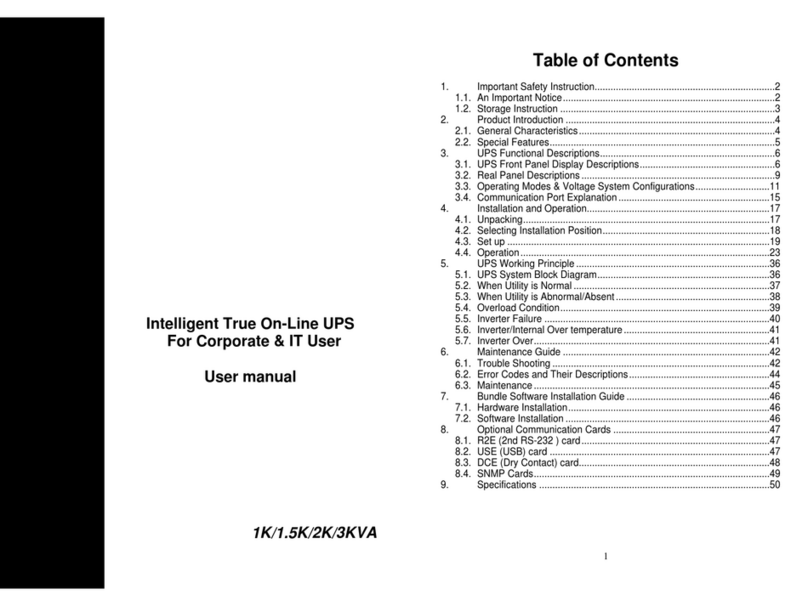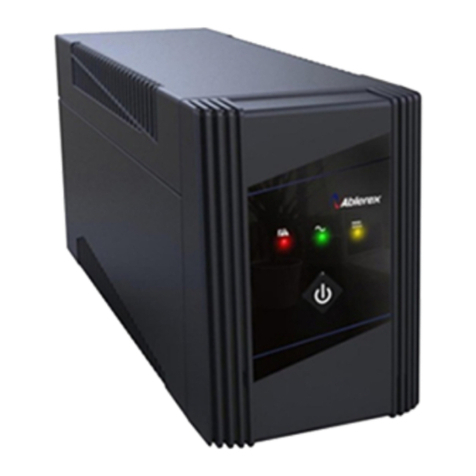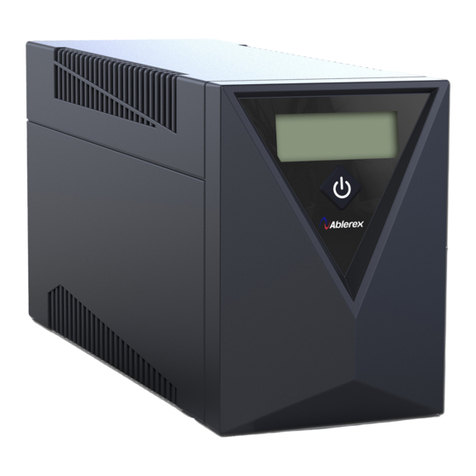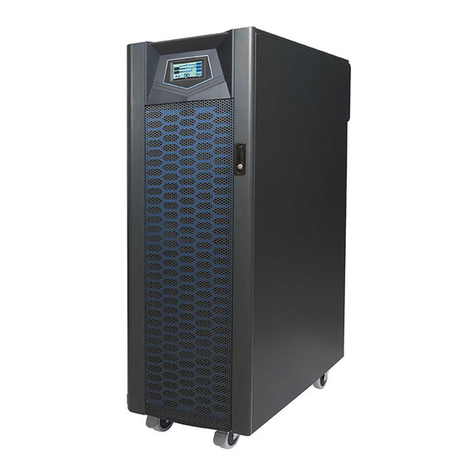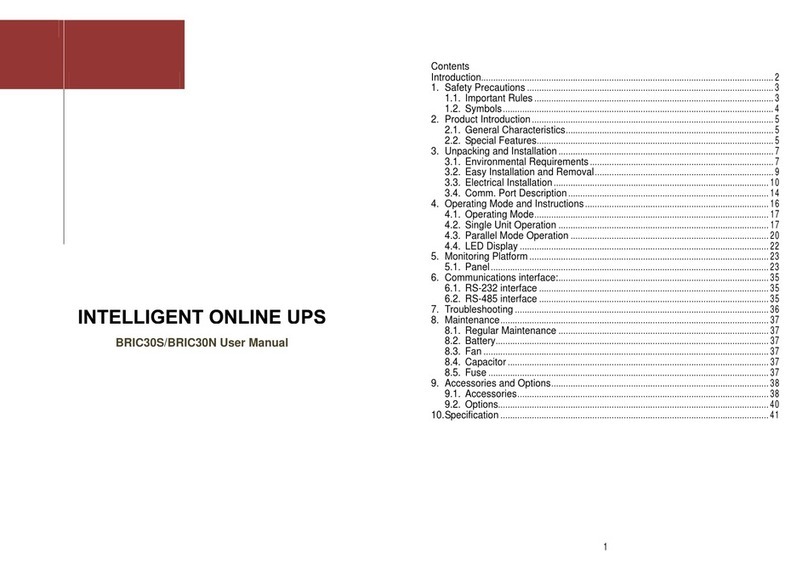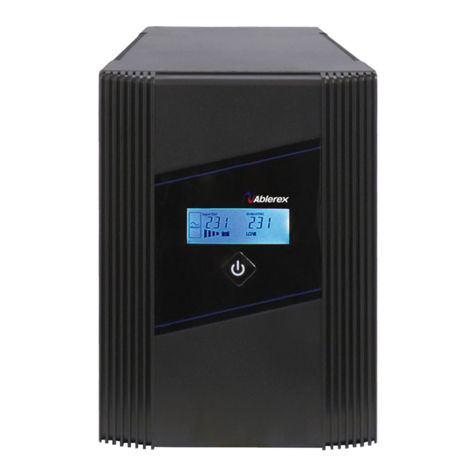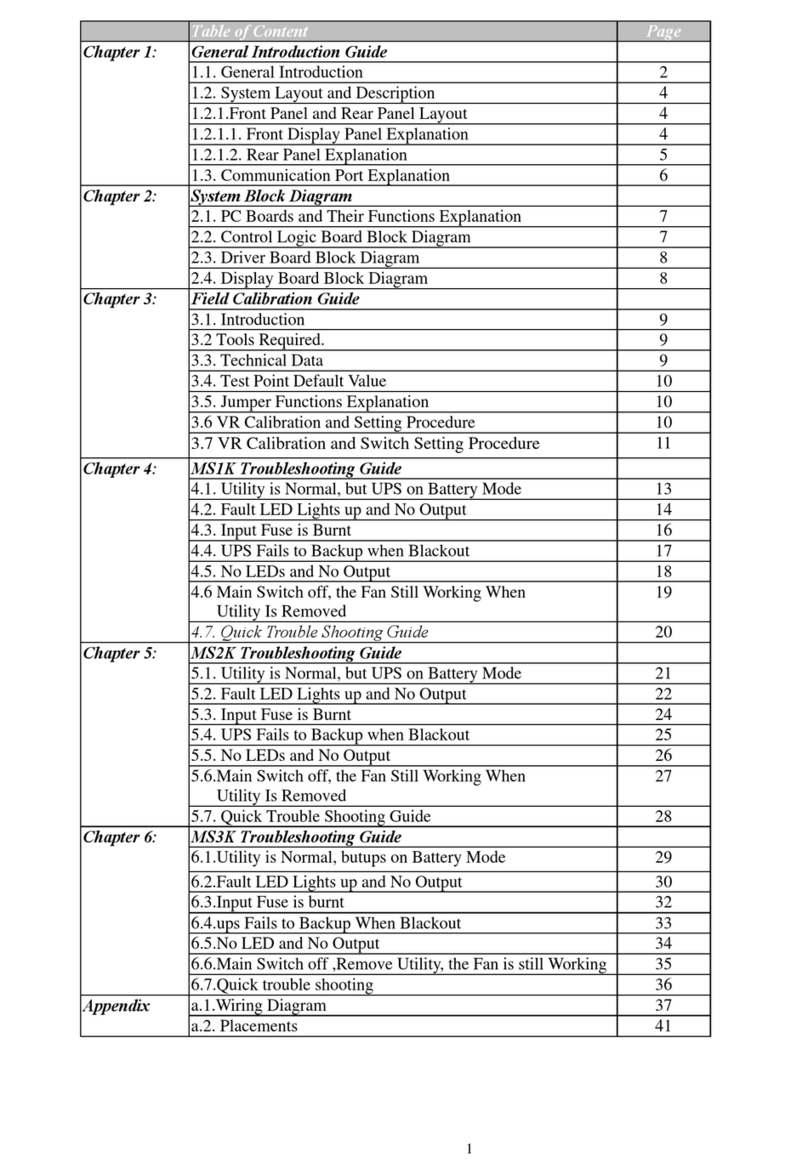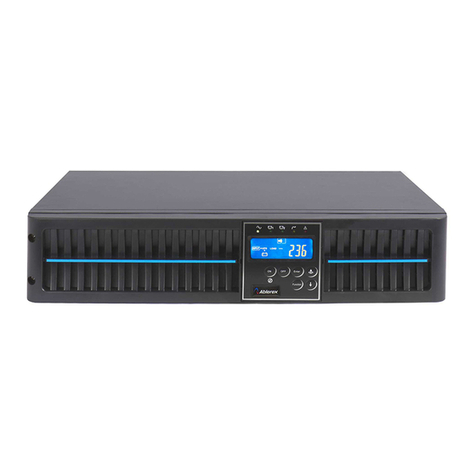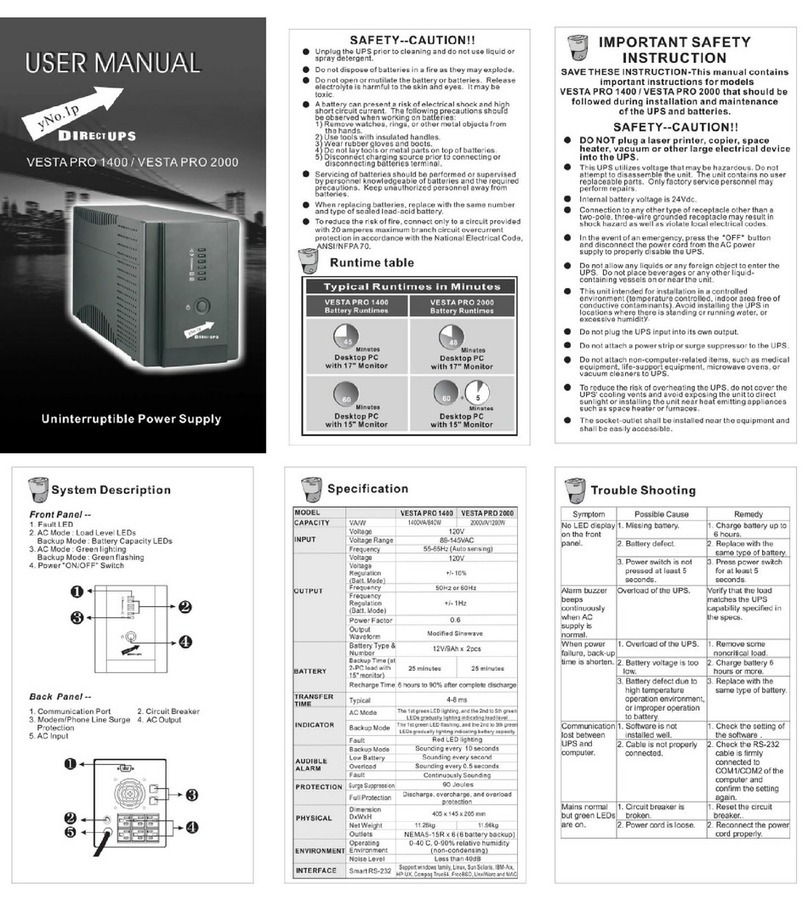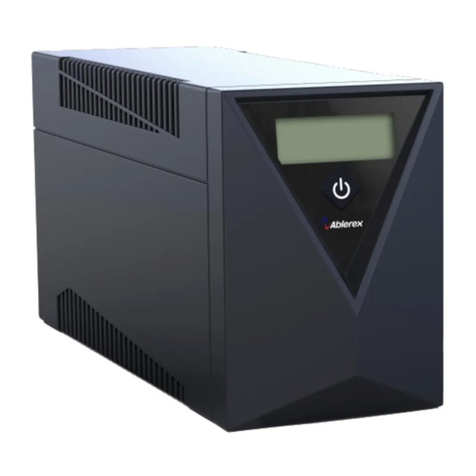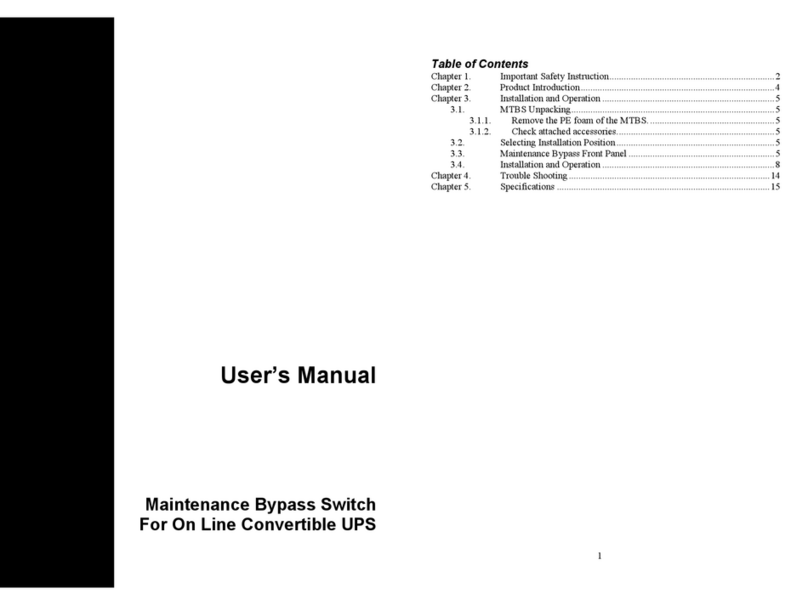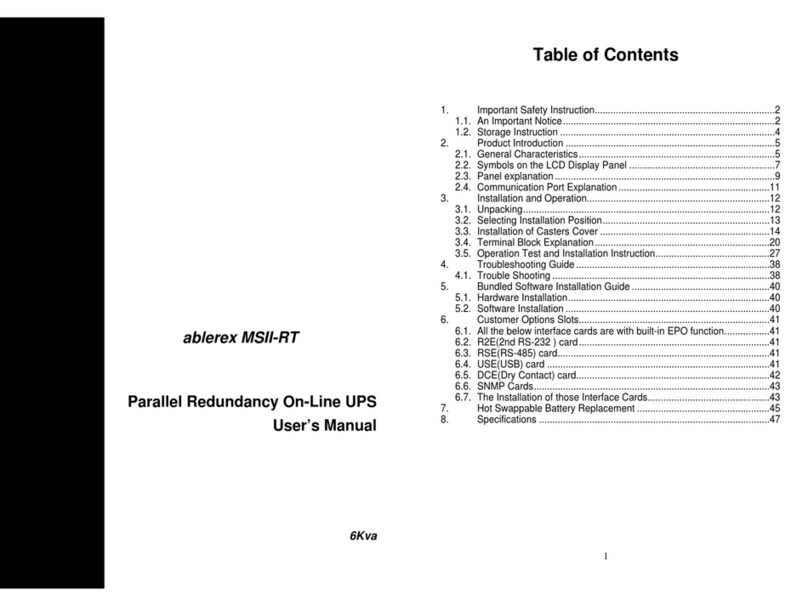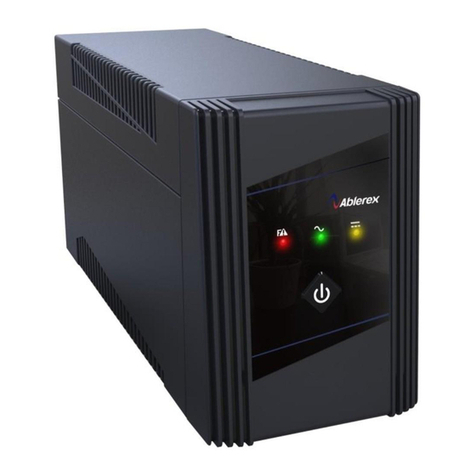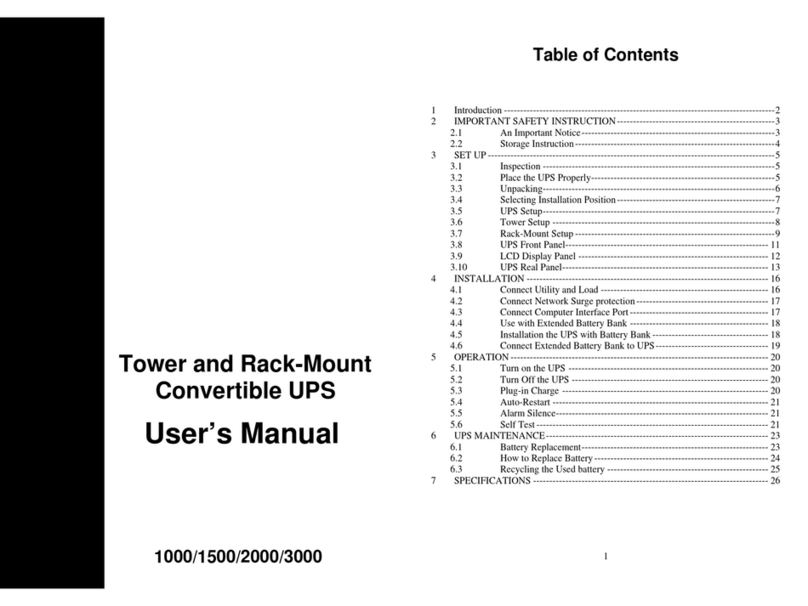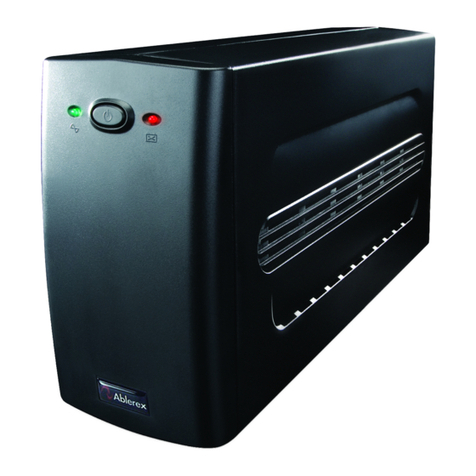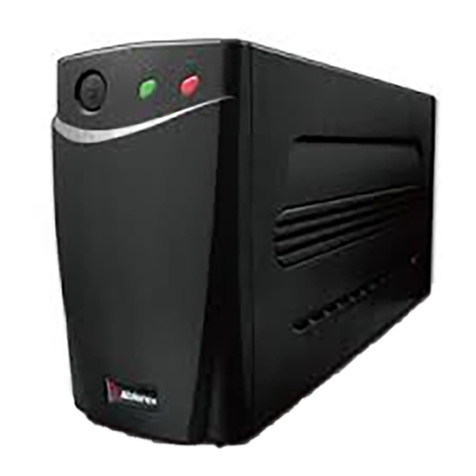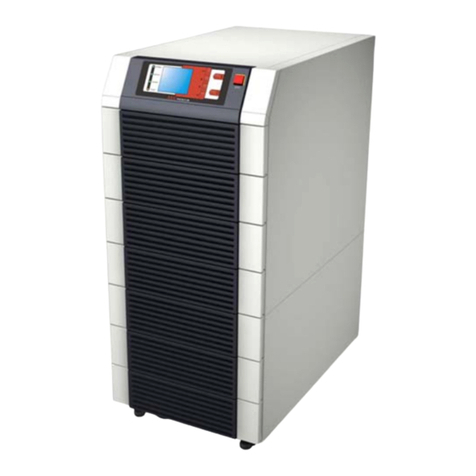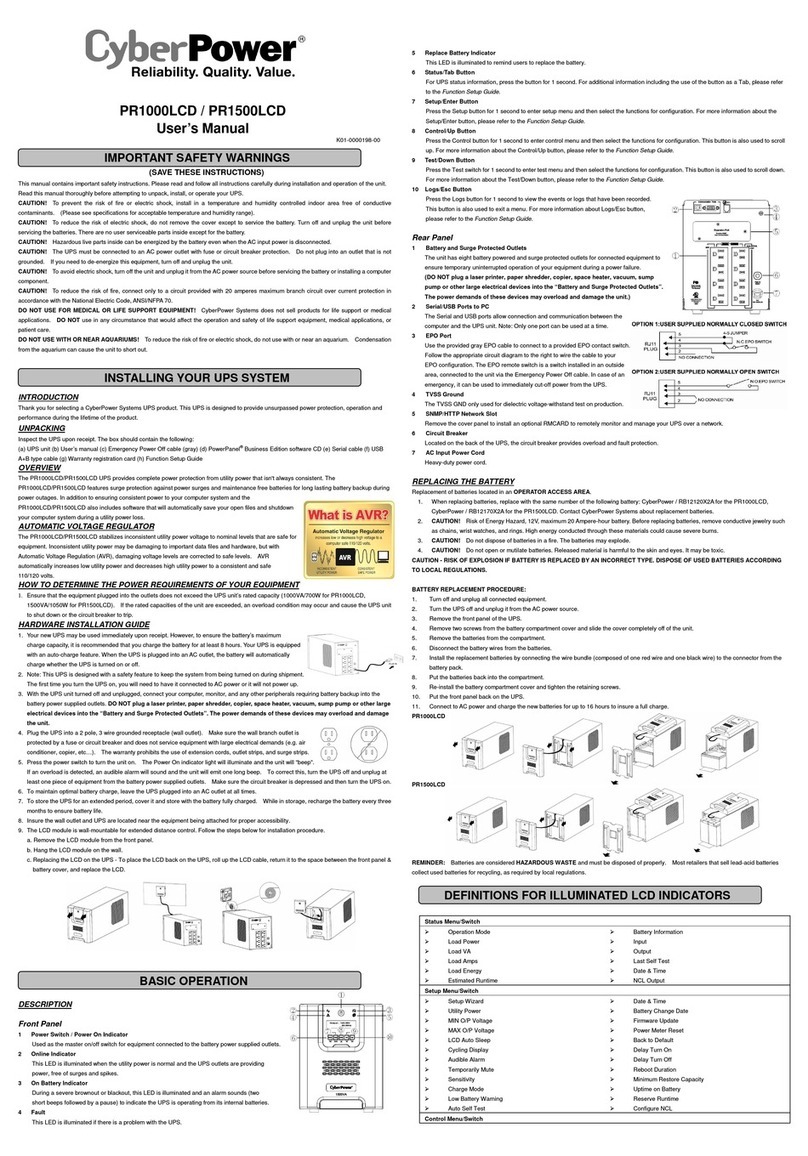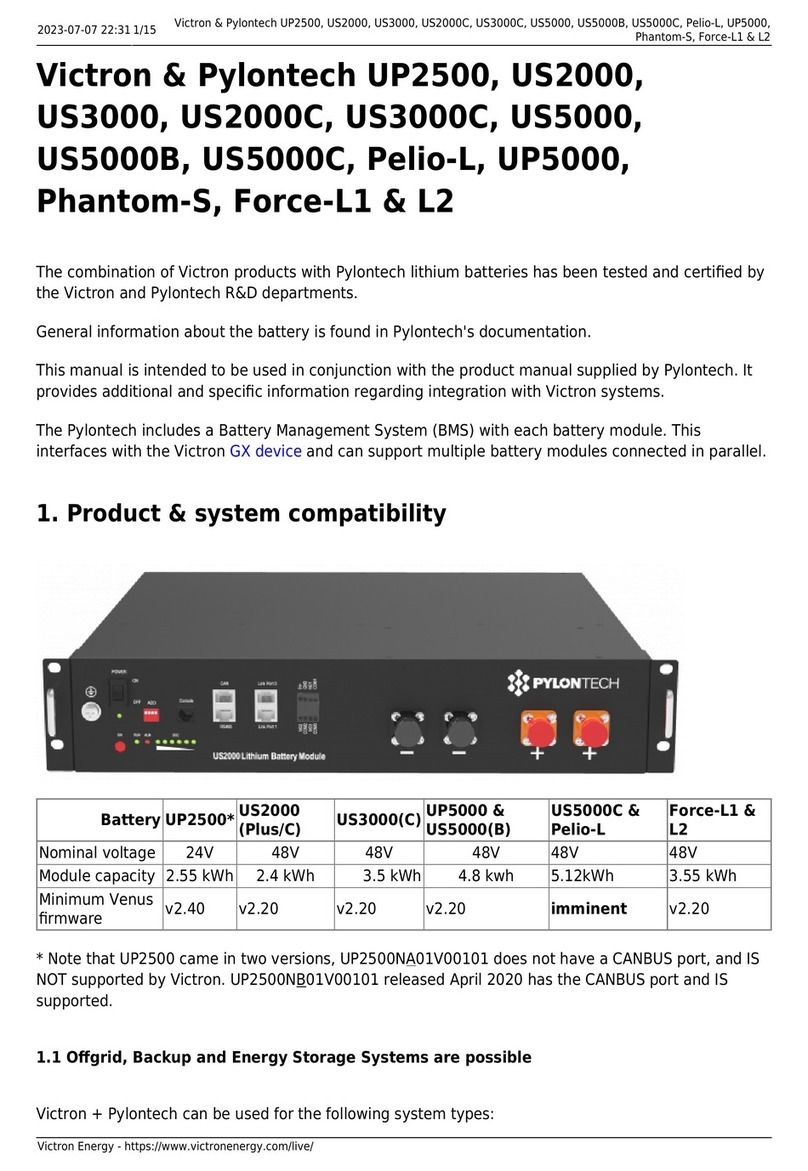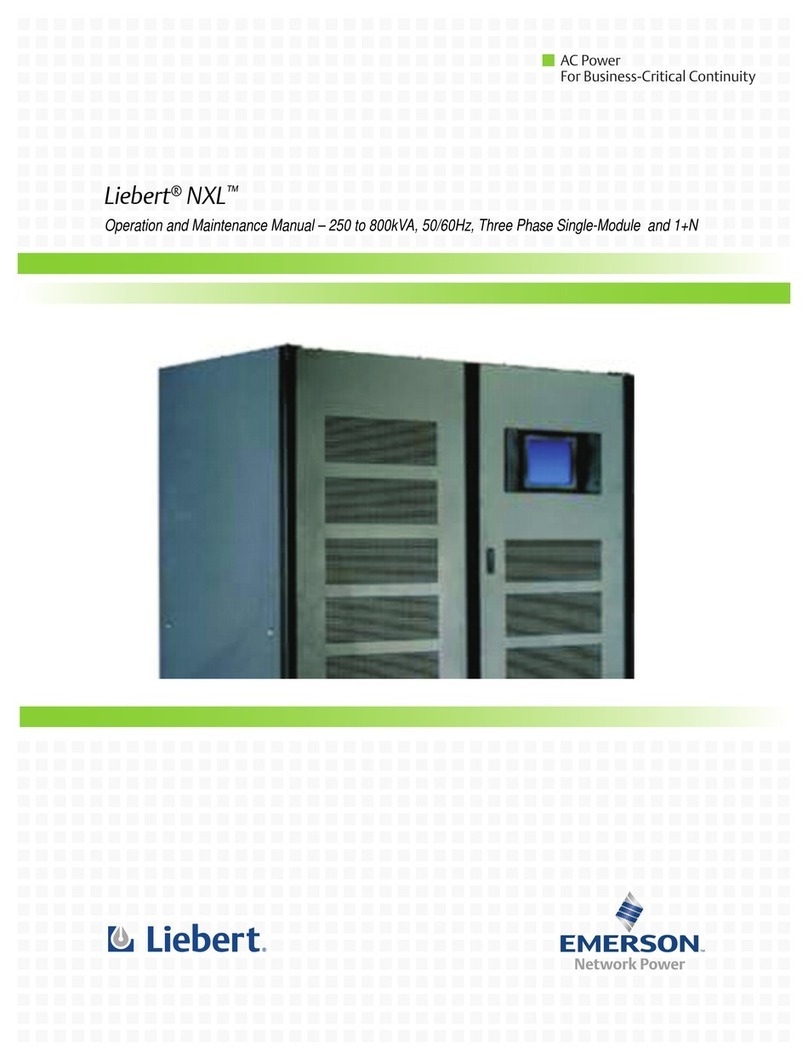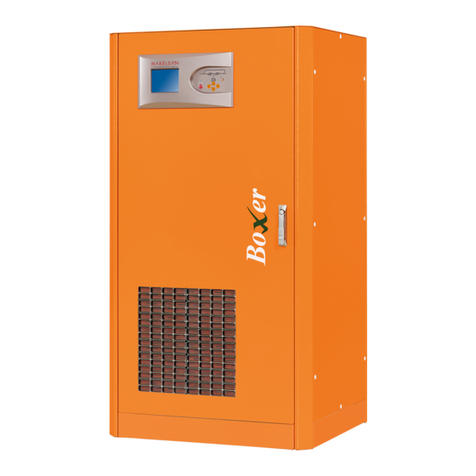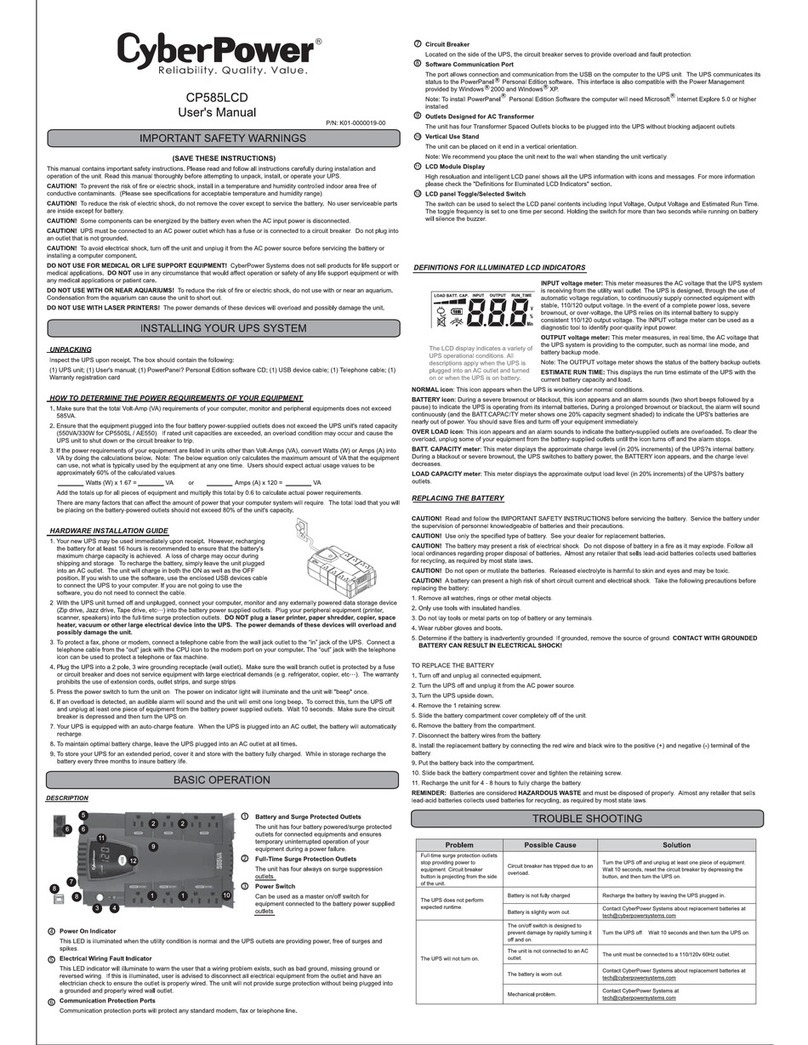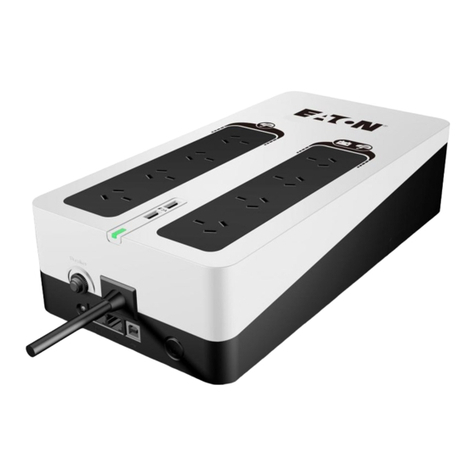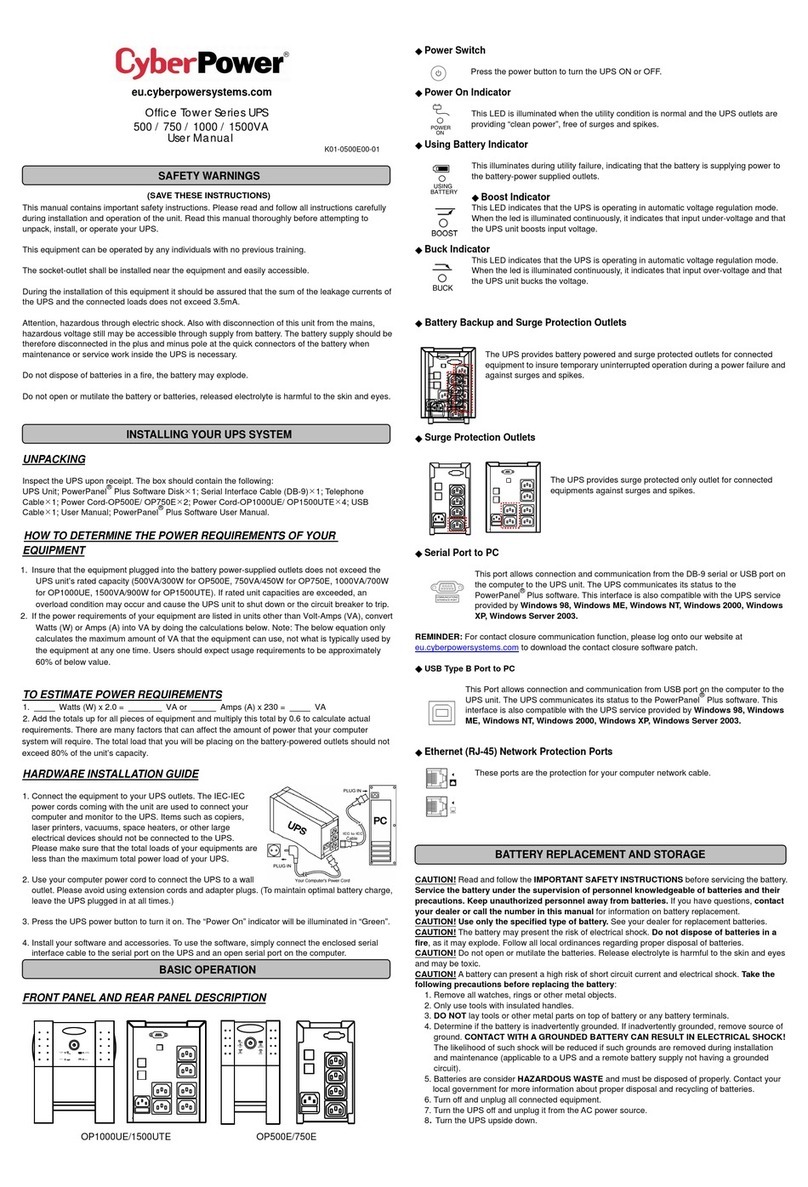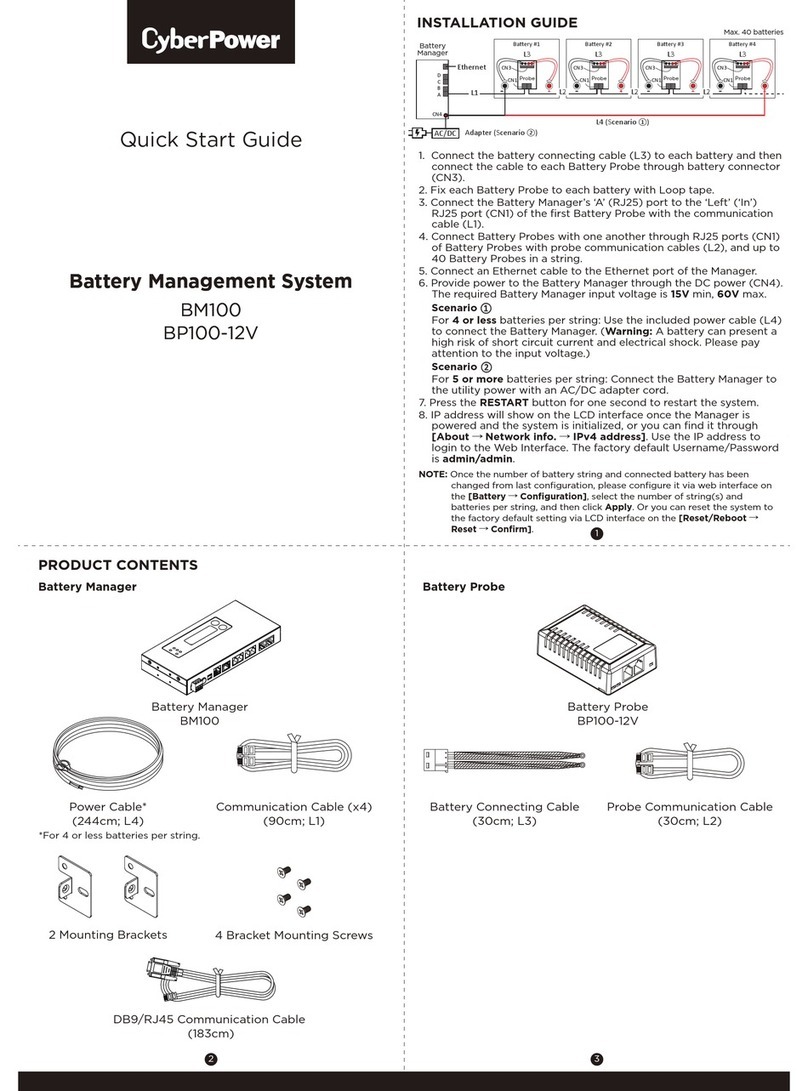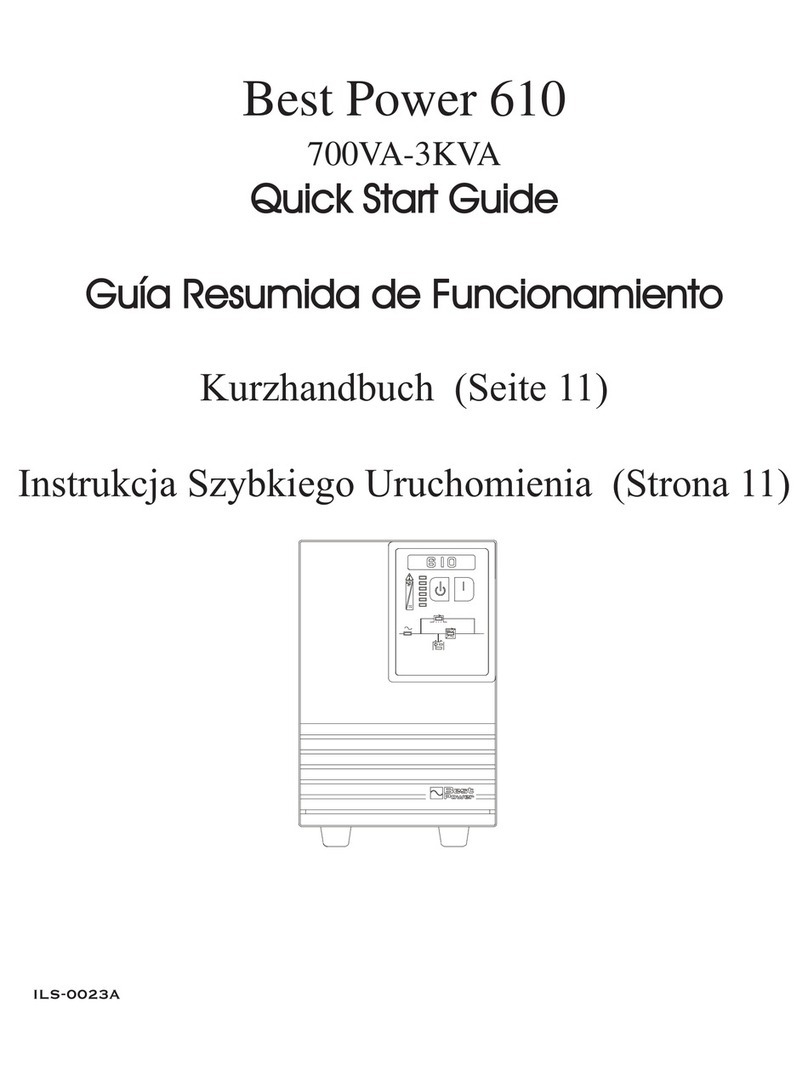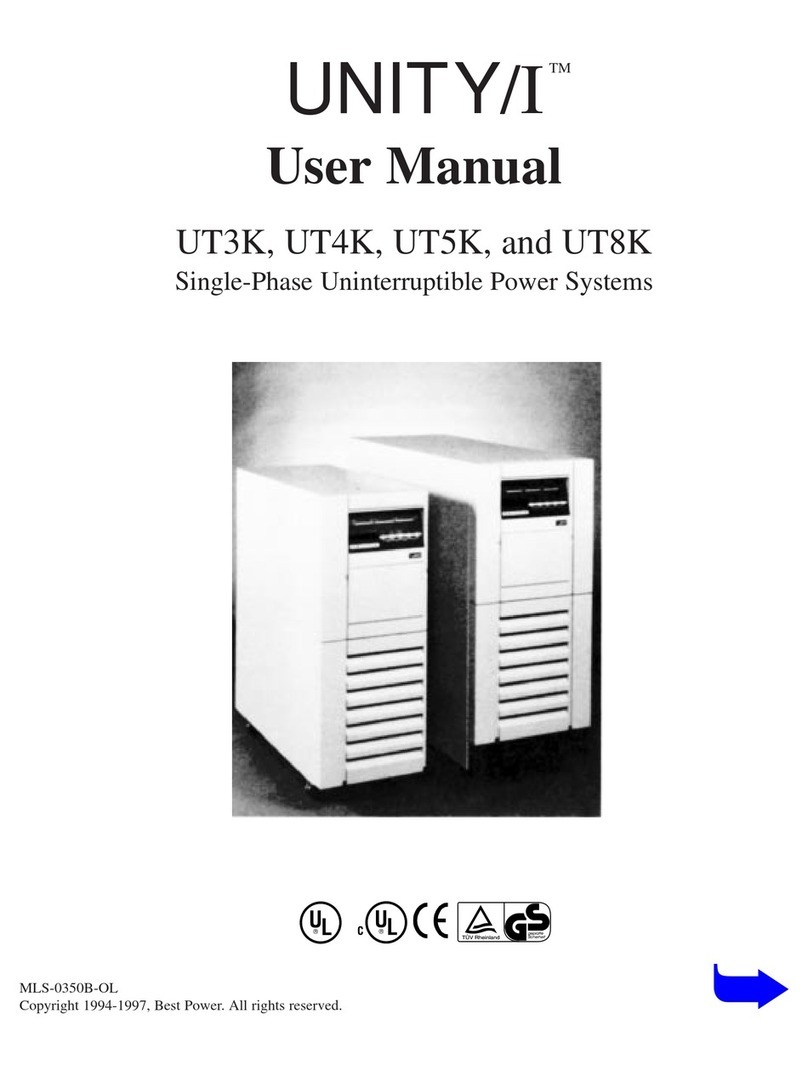2. Product Introduction
2.1. General Characteristics
2.1.1. True online architecture continuously supplies in your critical device with a
stable, regulated, transient-free pure sine waveAC Power.
2.1.2. 20KHz PWM sine-wave topology yields an excellent overall performance.
The high crest factor of the inverter handles all high-inrush current loads
without a need to upgrade the power rating.
2.1.3. Multi-functional LCD/LED panel may display various status of the UPS.
The LED display may show UPS working status, Utility Status and UPS
Abnormal status, in the mean while, the LCD display may show
Input/Output Voltage, Frequency, Load Status, Inner cabinet temperature,
and Abnormal Phenomenon.
2.1.4. To protect the unit from overloading, it automatically switches to bypass
mode in 160 seconds~ 40ms if loading is at 105%~ 150% of rating and in
case of overloading at 150% of rating, it switches to bypass mode
immediately. It will automatically switch back to inverter mode once
overload condition ceases.
2.1.5. Should the output becomes short-circuit, the UPS holds the system and
cuts the output automatically till the short circuit situation is removed
manually.
2.1.6. Should the unit become overheated, the internal thermal Switch will detect
the heat and switch to bypass mode and vice versa.
2.1.7. Fully digitalized control circuit built in the UPS improves the functionality of
the UPS and maximizes the protection of the UPS. The UPS is equip
with Communication capability for remote control and monitoring.
2.1.8. Maintenance-free sealed-type battery minimizes after-sales service.
2.1.9. Maintenance bypass switch —it provides an easy and safe
troubleshooting or maintenance function when the Utility is normal.
2.1.10. Providing four different working modes, such as Normal, ECO, CF50 and
CF60, it may widely be used in a variety of applications.
2.1.11. DC-start function makes sure of the start-up of UPS during power outages.
